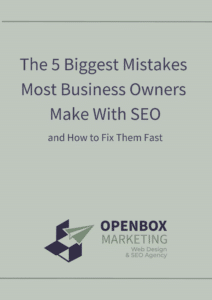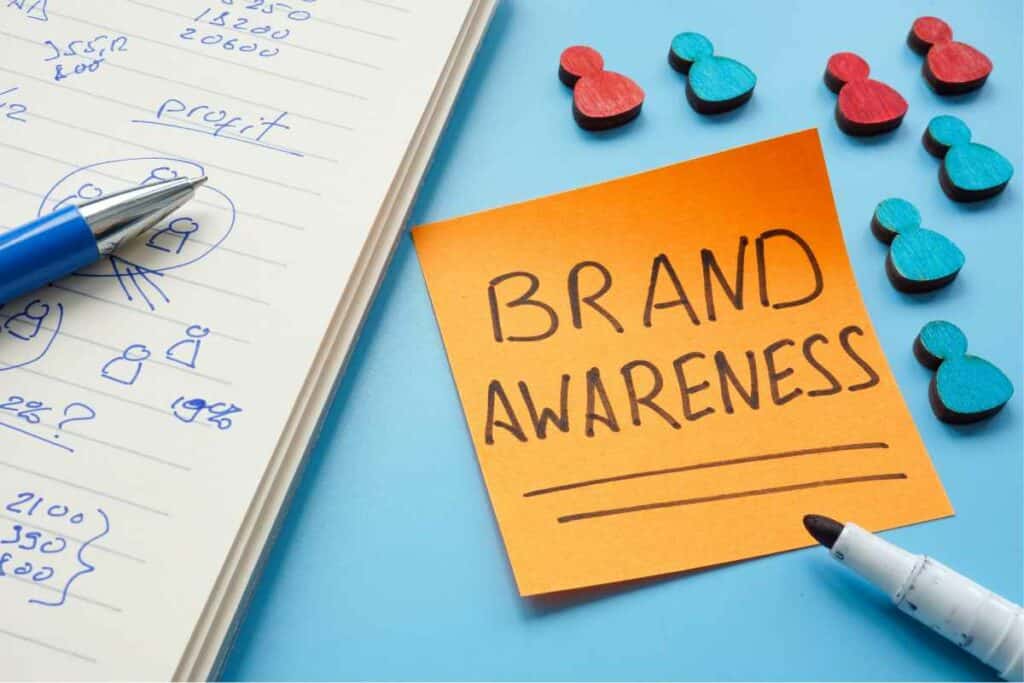Don't let SEO mistakes hinder your business's online success. Download our FREE guide today and unlock the strategies to optimise your visibility and avoid common pitfalls. Take charge and get your guide now!

What is Brand Awareness?

Brand awareness is a marketing concept that refers to how familiar your audience is with your brand and how easily and well they recognise it among other brands. It is that thing that becomes embedded in the purchase habits of a customer, who buys it without thinking twice.
What is an Example of Brand Awareness in Marketing?
Brands with high brand awareness, like Nike or Coca-Cola, tell a story, receive feedback and gain a personality. Just like humans build trust with one another, brands foster trust that encourages customers to repeat purchases.
For example, although many companies host events to present their new products or product updates, Apple events for launching new tech releases are so popular that customers tune in to check new gadgets.
The Coca-Cola “Share a Coke” campaign, selling bottles with people’s names, is an example of a brilliant brand awareness marketing strategy. It enabled the capitalisation of customers’ affinity for personalisation and turned into a classic campaign as buyers began to replace common words with the brand.
What are the Three Types of Brand Awareness?
To create effective brand awareness campaigns, you need to understand the types of brand awareness.
Brand Recall
Brand recall (or unaided or spontaneous recall) is the customer’s ability to prompt a brand name from memory when presented with a specific product category.
For example, when you hear “coffee“, specific brand names come to mind, usually at least three brands.
Brand recall shows a powerful link between the brand and the product category.
Brand Recognition
Brand recognition (or aided brand recall) is a customer’s ability to differentiate a brand when coming in contact with it. When given a brand name, for example, the customer can indicate the product category or product. Brand recognition comes from packaging, logos, slogans, etc. and proves that a brand is currently reaching its target market.
Top-of-mind Awareness
Top-of-mind awareness refers to the first brand that comes to a customer’s mind when asked a spontaneous question about a product category. It is also perceived as the most recalled or remembered brand name and indicates that the customer has the brand in mind for purchase.

What are the Three Ways to Measure Brand Awareness?
Measuring brand awareness through KPIs provides valuable insights for optimising your brand awareness marketing strategy.
The three KPIs you can use to measure brand awareness are:
Website Traffic
This KPI measures the impact of your brand awareness campaign on the traffic of your website. The more people visit your website, the more people are aware of your brand.
Branded Search Volume
This indicator tracks how many people visit your website after searching for your brand on search engines. The more people type your brand name into the search engines on the Internet, the more people know about your brand.
Mentions
As the name suggests, mentions refer to all the times your brand, product or service is mentioned in publications or social media. Tracking this KPI enables you to check how much people talk about your brand and what they are saying about it, which in turn helps you adjust your products and campaigns.
What are the Five Levels of Awareness Marketing?
In 1966, Eugene Schwartz wrote the book “Breakthrough Advertising” in which he promoted the framework named “the 5 stages of awareness“. The central point of this theory was that it is not enough to have a great product or service; you need to meet potential customers in their current frame of mind. This refers to:
- the degree to which your prospects (customers) are aware of the problem they need to solve;
- the solutions at hand to solve it;
- the products that can help;
- how and why customers should choose your product from all available options.
Stage 1: Unaware
The prospects in this frame of mind are unaware they have a pain or problem to solve.
Stage 2: Problem Aware
The prospects in this stage realise that they have a problem but are not yet aware of the solutions to solve it.
Stage 3: Solution Aware
In this frame of mind, the prospects are very much aware of the problem and searching and discovering solutions to solve it.
Stage 4: Product Aware
The prospects are actively checking different products or services to solve their problem. While your product may be amongst them, they have not yet decided to buy.
Stage 5: Most Aware
In this stage, the prospects are almost ready to buy, but they most likely need something to push them to buy.
Why is it Important to Know These Stages?
It allows you to build your brand awareness marketing strategy accordingly.
For example, for prospects in the “product aware” stage, your strategy should include marketing tools that mention the benefits, price and features of your product. For those in the “most aware” stage, your advertising should contain a strong “call-to-action” that will determine the prospect to take action and make the purchase.

How to Create a Successful Brand Awareness Marketing Strategy
To create a successful brand awareness marketing strategy, you need to:
Understand Your Audience
A deep understanding of your target audience enables you to tailor your message in resonance with the needs, desires and interests of this audience.
Create Engaging and Compelling Content
Informative content is no longer enough; what you publish needs to be engaging, useful and interesting so your readers (potential customers) return to your website for more. Content that includes case studies, expert opinions, research findings or industry insights contributes to your company’s reputation as a reliable source of information.
Use Data Analytics and Technology as Assets
Data can help you assess your competitors, identify trends, and understand consumer behaviour to align your branding projects with the market’s demand and industry trajectory to support your marketing efforts in achieving your business goals.
Technology is a vital component of the new generation marketing, so use it as leverage to reach your audience on social media and other platforms where they go most frequently. Using state-of-the-art technology can provide your products a competitive edge and help increase your customer base.
Increase Your Visibility Through Effective PR
Public relations (PR) is an effective tool for your brand awareness marketing strategy, and you can harness its power by sharing expert opinions, organising industry events and webinars or contributing to articles posted on reputable platforms.
These PR efforts will increase your visibility and credibility and contribute to brand recognition.
Create Partnerships and Collaborations to Expand Your Reach and Audience
Partnerships with reputable companies can help you access their audience and expand your reach. Collaborating with companies with complementary objects of activity can increase the presence of your brand in the market.
Measure, Adjust, Repeat
Becoming an expert in brand awareness entails measuring the results of your actions through specific industry KPIs, establishing what worked and what didn’t and making adjustments.
To master brand awareness strategies, you must continuously measure and adjust your strategies to exceed your target audience’s expectations.
Mastering brand awareness marketing strategy is an ongoing process that requires you to understand your audience, meet them where they are, leverage technology and data analytics, use PR as a tool to increase visibility, share compelling content, create partnerships and collaborations and monitor your KPIs to understand where they need adjustment. All these steps will ensure your brand has a strong presence in the market, providing you with a competitive edge in your industry.
Share this Article

Janet Podham
Janet Podham is the owner of Openbox Marketing Limited. She has a post-graduate diploma from the University of Otago, majoring in Data Science. She has spent two years studying website design and SEO in the Champions Masters Program at the eBusiness Institute in Australia. She loves helping people and knits for local foster children in her spare time.






